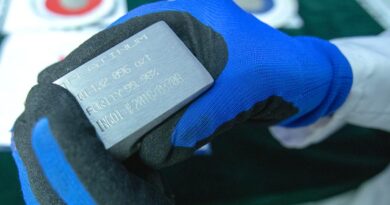Tin-based device could enable quantum internet
A new device that uses tin atoms embedded in diamond could pave the way for the development of a quantum internet, according to researchers from MIT and the University of Cambridge.
The device, reported in Nature Photonics, consists of a microchiplet made of diamond in which some of the carbon atoms are replaced with tin atoms. These tin atoms form defects that can act as qubits, the basic units of quantum information. The researchers demonstrated that the device can efficiently transfer quantum information between two different types of qubits: electronic and nuclear. Electronic qubits are good at interacting with light, which is essential for transmitting quantum information over long distances. Nuclear qubits are good at storing quantum information for a long time, which is important for preserving coherence and fidelity.
By combining these two qubits, the researchers solved a paradox that has hindered the progress of quantum networks: the need for qubits that are both strongly coupled to light and weakly coupled to the environment.
“This is a critical step as it demonstrates the feasibility of integrating electronic and nuclear qubits in a microchiplet. This integration addresses the need to preserve quantum information over long distances while maintaining strong interaction with photons,” said Dirk Englund, an associate professor at MIT and leader of the MIT team.
The device could be used as a building block for quantum repeaters, intermediate stations that can manipulate and refresh quantum information in a quantum network. Quantum networks could enable secure communication, distributed computing, and enhanced sensing.
The researchers plan to further improve the performance of the device and integrate it with other photonic components, such as cavities and waveguides, to create scalable quantum network architectures.
The work was funded by the European Research Council, the Winton Programme, the Engineering and Physical Sciences Research Council, the General Sir John Monash Foundation, the MITRE Quantum Moonshot Program, and the Army Research Laboratory.




